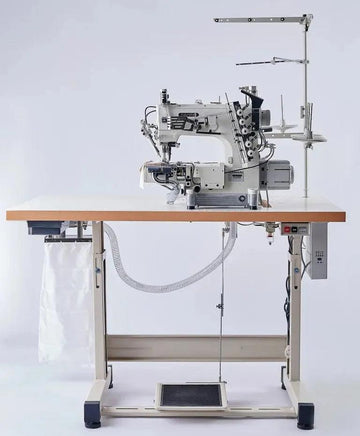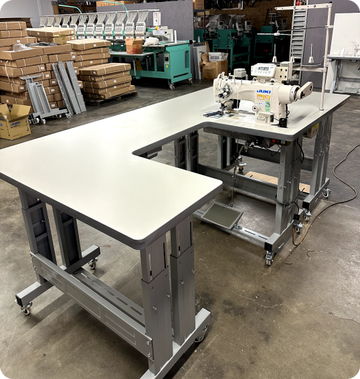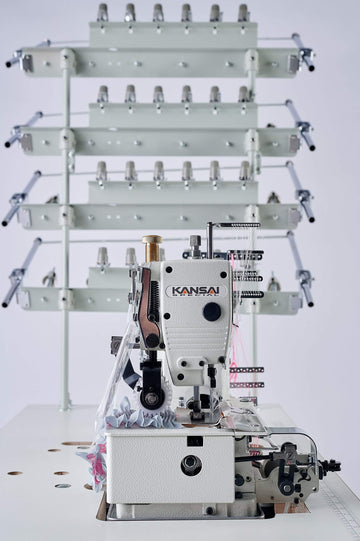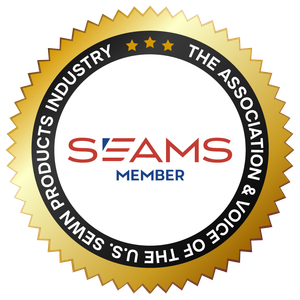Introduction: The Hidden Power Behind Every Perfect Stitch
Every stitch in industrial sewing starts with one small but mighty component — the needle. Whether you run a production line in Los Angeles, craft leather goods in South El Monte, or manage large-scale upholstery manufacturing, choosing the correct industrial sewing machine needle is essential.
Using the wrong needle may seem minor, but it can cause skipped stitches, broken threads, fabric damage, and expensive downtime. Conversely, the right needle delivers consistent, professional-quality seams and preserves your machine’s performance. This comprehensive industrial sewing machine needle guide will help you understand needle types, sizes, and how to match them with the right thread and fabric.
Anatomy of an Industrial Sewing Machine Needle
To select the perfect needle, you must understand its anatomy. Each part serves a unique function that contributes to stitch quality:
-
Shank: The thicker upper portion inserted into the needle bar. Industrial needles usually have a round shank, offering more stability at high speed.
-
Blade/Shaft: Determines the needle’s diameter, which defines its size and strength.
-
Groove: Runs along the front of the needle, guiding the thread smoothly during stitching.
-
Eye: The hole near the point through which the thread passes.
-
Scarf: The small cut above the eye that allows the hook to catch the thread loop correctly.
-
Point: The shape and sharpness determine how the needle penetrates the material.
Industrial needles are designed for endurance — capable of withstanding thousands of stitches per minute on heavy fabrics. Compared to domestic needles, industrial type sewing machine needles are stronger, longer, and built for consistent precision under commercial pressure.
Understanding Industrial Needle Sizes
Confusion often arises when comparing needle sizes because two main systems exist: Metric (Nm) and Singer (Size).
-
Metric size (Nm): Indicates the needle diameter in hundredths of a millimeter. For example, Nm 100 means 1.0 mm.
-
Singer size: A corresponding number system (e.g., 16 for 100 Nm).
Industrial Sewing Machine Needle Size Chart:
|
Metric (Nm) |
Singer Size |
Typical Use |
|
60 |
8 |
Lightweight fabrics like silk |
|
70 |
10 |
Light cotton or polyester |
|
80 |
12 |
Medium-weight fabrics |
|
90 |
14 |
Denim, canvas |
|
100 |
16 |
Upholstery, vinyl |
|
110 |
18 |
Leather, thick canvas |
|
120–140 |
19–22 |
Heavy leather, tarps, coated materials |
This industrial sewing machine needle sizes chart helps you translate between systems and select the best option for your fabric and thread.
Understanding needle size metric to standard is vital because a mismatch can cause thread breakage, uneven stitches, or fabric distortion.
Types of Industrial Sewing Machine Needles
Different fabrics demand different needle points. The types of needles for industrial sewing machines are categorized by their point shape and intended application:
|
Needle Type |
Description |
Recommended Fabrics |
|
R (Sharp Point) |
Standard round point for most woven materials |
Cotton, polyester, canvas |
|
SES (Ballpoint) |
Rounded tip that slips between fabric threads |
Jersey, knits, stretch materials |
|
LR (Leather Point) |
Cuts fabric at a slight angle for decorative stitches |
Soft leather, vinyl |
|
S (Cutting Point) |
Straight cut, producing smooth seams |
Hard leather, belts |
|
SPI (Twist Point) |
Creates a slanted stitch appearance |
Decorative leather goods |
|
Wedge Point |
Triangular shape for thick leather or synthetic composites |
Heavy upholstery |
When selecting from the different types of industrial sewing machine needles, consider both material and thread. Chrome or titanium-coated versions resist heat buildup, extending needle life during continuous production.
Matching Needle and Thread: The Perfect Partnership
The relationship between needle and thread size determines seam strength and stitch appearance. Using a thread too thick for the needle eye can lead to fraying, while an oversized needle will leave visible holes in the fabric.
Industrial Sewing Machine Needle and Thread Size Chart:
|
Thread Size (Tex) |
Recommended Needle Size |
Common Materials |
|
27–40 |
70/10 – 80/12 |
Light fabrics, apparel |
|
45–70 |
90/14 – 100/16 |
Denim, canvas |
|
80–135 |
110/18 – 120/19 |
Upholstery, leather |
|
150–210 |
130/21 – 140/22 |
Saddlery, tarps, technical textiles |
Use this industrial sewing machine needle thread chart as a reference to balance tension and avoid skipped stitches.
Choosing the Right Needle for Your Project
When selecting a needle, consider three main factors: fabric type, thread type, and machine system.
By Fabric Type:
-
Lightweight fabrics → 60/8–70/10 sharp or ballpoint needles.
-
Denim/Canvas → 90/14–100/16 sharp point needles.
-
Leather/Upholstery → 100/16–130/21 wedge or LR point needles.
-
Stretch/Knitwear → 70/10–90/14 ballpoint needles.
By Thread Type:
-
Bonded nylon/polyester → Use a larger eye (100–120 Nm).
-
Cotton or spun thread → Medium eye (80–100 Nm).
By Machine Type:
-
Needle feed industrial sewing machine → Typically 90–100 Nm.
-
Walking foot machine → 110–120 Nm for heavy-duty materials.
This section of the industrial sewing machine needles guide ensures you pick a needle that complements your equipment and materials for flawless stitching.
Troubleshooting & Maintenance
Signs of using the wrong needle:
-
Irregular stitch formation
-
Needle breakage
-
Puckered seams
-
Thread looping or skipping
When to replace needles:
Even if a needle looks fine, micro-wear affects performance. Regularly inspect and replace after every project or production shift.
Storage Tips:
Store by size and type using labeled containers. Keep your industrial sewing machine needles chart nearby for quick reference before switching materials.
Read Also: Sewing Machine Stitching Types
Conclusion: Stitch Smarter, Not Harder
Mastering understanding industrial sewing machine needle sizes will dramatically improve your efficiency and final product quality. With this industrial sewing machine needle sizes and uses guide, you can make confident, data-driven choices every time.
Always rely on an industrial sewing machine needle size chart before sewing new materials, and remember: precision starts at the point of the needle.
By applying the information in this industrial sewing machine needles size guide, you protect your investment, increase output quality, and ensure smooth production from start to finish — whether you’re crafting custom garments in California or running commercial manufacturing lines across the U.S.
Ready to elevate your sewing results?
Bookmark this industrial sewing machine needle size guide from Prizzi and use it every time you change fabric or thread. Because in industrial sewing, quality starts with the smallest detail — the needle.









